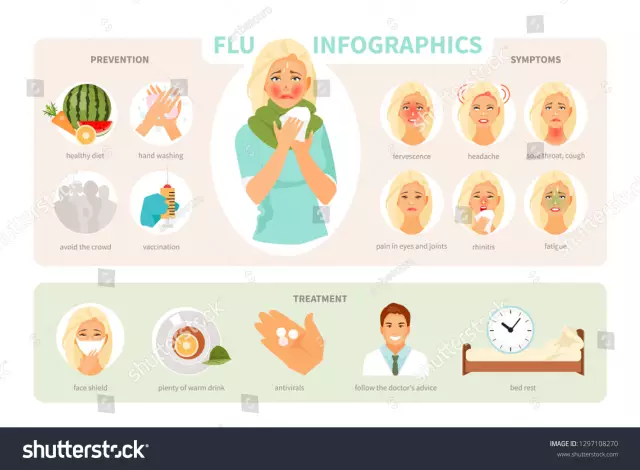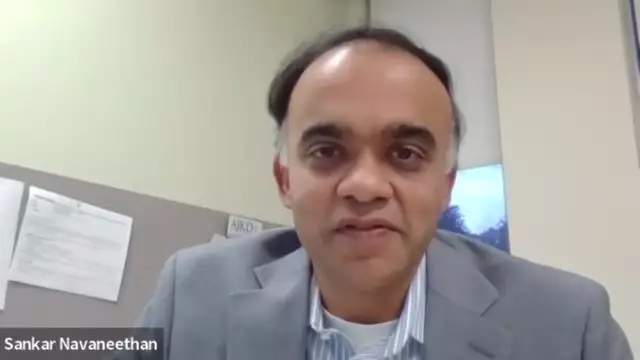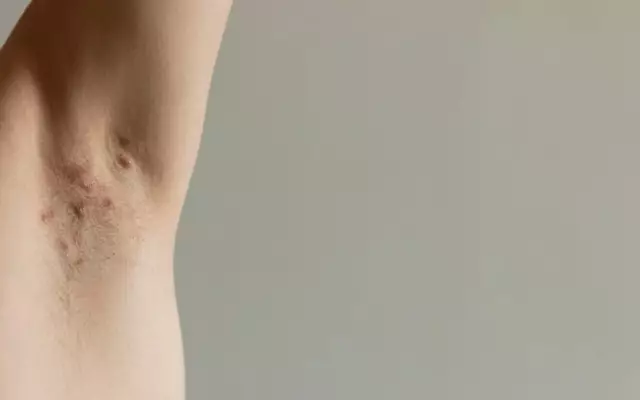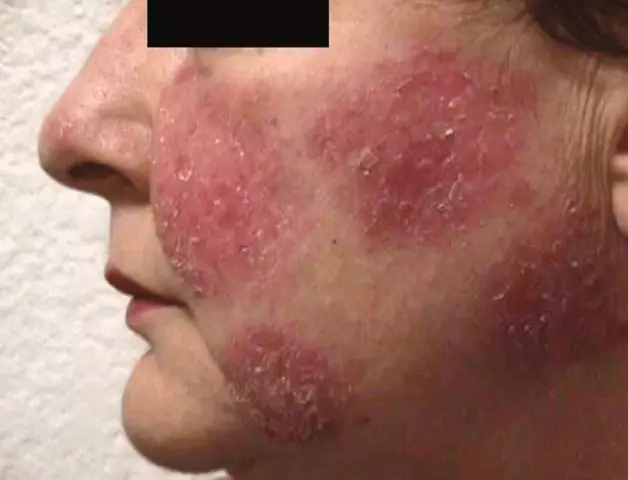- Author Rachel Wainwright [email protected].
- Public 2023-12-15 07:39.
- Last modified 2025-11-02 20:14.
Parainfluenza
What is parainfluenza and why does it occur?

Parainfluenza is an infectious disease that affects the mucous membranes of the upper respiratory tract, is accompanied by moderate intoxication of the body and can lead to epidemics. The causative agent of the infection is the parainfluenza virus, and the source of infection is a sick person.
People infected with parainfluenza pose a danger to others during the entire incubation period and in the acute phase of the development of the disease. The virus is transmitted by airborne droplets, so parainfluenza in children begins to develop both through direct contact with a sick person and by inhaling air containing pathogens. Parainfluenza affects mainly children under the age of 7 years and leads to outbreaks of the disease that cover most of the children's team.
The mechanism of infection
With droplets of saliva or dust particles, the parainfluenza virus enters the mucous membrane of the upper respiratory tract. There it is deposited on the epithelium of the upper sinuses of the nose and larynx, and also penetrates directly into the cells. The parainfluenza virus has the ability to completely destroy epithelial cells with the further development of the inflammatory process and the manifestation of general toxic symptoms (fatigue, headache, fever, decreased appetite).
As parainfluenza progresses, the person's immune system continues to weaken. This leads to the activation of its own pathogenic microflora and the appearance of secondary infections. Parainfluenza, the treatment of which was carried out correctly, develops immunity, however, it is short-lived. Antibodies quickly lose their protective qualities, and therefore a child can get parainfluenza two or more times a year. However, even a slight immunity prevents the development of severe forms of the disease, which is especially important in the case of children in whom the body cannot provide adequate resistance to various diseases.
Parainfluenza symptoms
The incubation period of the disease lasts about a week. After that, the patient develops acute symptoms of parainfluenza:
- an increase in body temperature (reaches a maximum on days 2-3 of the disease);
- nasal congestion;
- malaise, weakness;
- headaches;
- decreased appetite;
- fast fatiguability.
The general condition of the patients is satisfactory. With the symptoms of parainfluenza, intoxication is usually weak, therefore, lesions of the upper respiratory tract epithelium come to the fore, which serve as the basis for correct diagnosis. Patients are worried about: dry, hacking cough, nasal congestion, sore throat, hoarseness. In addition, parainfluenza in children causes swelling of the tonsils and redness of the pharyngeal mucosa.
Distinguish between mild, moderate and severe parainfluenza. The latter is extremely rare, but leads to numerous complications: pneumonia, angina, sinusitis, chest pains, lesions of the central nervous system, stenosis, and Croup syndrome. The child becomes restless, he has cyanotic fingertips and severe tachycardia. Severe parainfluenza, the treatment of which began too late, can go into the most dangerous phase - asphyxia, in which the skin turns pale, the body temperature drops greatly and serious breathing problems are observed. During this period, urgent resuscitation measures are needed, otherwise the patient may die.
Parainfluenza in children under the age of 1 year has a low-symptom character. At the same time, up to 6 months, the child has innate immunity received from the mother, therefore, it rarely gets sick and without complications. After six months, the baby becomes susceptible to parainfluenza and its complications, including Croup syndrome.
Parainfluenza treatment

When treating parainfluenza, it is necessary to ensure bed rest, rest, drinking plenty of fluids and constant monitoring of their well-being. Antiviral agents (cycloferon, arbidol, viferon) are used to treat parainfluenza. To reduce the temperature, antipyretic drugs are recommended. Antibacterial agents are advisable to use when secondary infections are attached. Patients with serious complications, such as Krupa's syndrome, are hospitalized for specialized medical care.
Also remember that self-medication is very dangerous. Parainfluenza in children can lead to serious consequences, so the child must be shown to a doctor who will choose the safest drugs and will monitor the change in the baby's condition.
Prevention of parainfluenza
There are no specific measures for the prevention of parainfluenza. Parents should isolate a sick child from healthy children, ventilate the premises, and regularly carry out wet cleaning. In case of contact with a patient with parainfluenza, it is advisable to use a gauze bandage, and treat furniture and other household items in his room with disinfectant solutions.
YouTube video related to the article:
The information is generalized and provided for informational purposes only. At the first sign of illness, see your doctor. Self-medication is hazardous to health!






